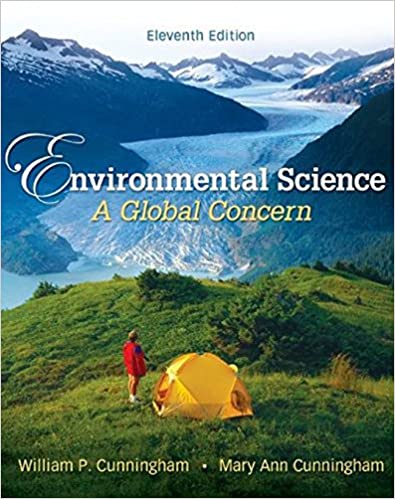
Environmental Science: A Global ConcernEnvironmental Science: A Global Concern 11th Edition by William Cunningham, Mary Ann Cunningham
Edition 11ISBN: 978-0697806451
Environmental Science: A Global ConcernEnvironmental Science: A Global Concern 11th Edition by William Cunningham, Mary Ann Cunningham
Edition 11ISBN: 978-0697806451 Exercise 18
As we discussed in chapter 8, children are much more vulnerable than adults to environmental health hazards. Pound for pound, children drink more water, eat more food, and breathe more air than do adults. Putting fingers, toys, and other objects into their mouths increases children's exposure to toxins in dust or soil. And compared to adults, children generally have less-developed immune systems or processes to degrade or excrete toxins. Because children spend a significant portion of time at school, pesticides used in schools may be an important contributor to overall exposure.
There is no federal mandate to collect data on pesticide use in schools, and few states require reporting of this information, so we know little about how pesticides are used in the nation's 110, 000 schools.
In 1999 the state of Minnesota conducted a survey on pesticide use in schools. This study focused on indoor uses of pesticides, because pesticide residues can be persistent indoors, and because children spend most of their time indoors when they are at school. The graph at right presents results from this study. It presents information about the frequency of spraying and where these pesticides were used. These measures are only a surrogate for exposure. They don't provide information about the toxicity of pesticides used or details about how they were applied and thus cannot provide a complete representation of the risk of adverse effects following exposure. Nevertheless, the frequency of exposure is valuable information about the extent of risk.

After studying the graph, answer the following questions:
Why does this matter
There is no federal mandate to collect data on pesticide use in schools, and few states require reporting of this information, so we know little about how pesticides are used in the nation's 110, 000 schools.
In 1999 the state of Minnesota conducted a survey on pesticide use in schools. This study focused on indoor uses of pesticides, because pesticide residues can be persistent indoors, and because children spend most of their time indoors when they are at school. The graph at right presents results from this study. It presents information about the frequency of spraying and where these pesticides were used. These measures are only a surrogate for exposure. They don't provide information about the toxicity of pesticides used or details about how they were applied and thus cannot provide a complete representation of the risk of adverse effects following exposure. Nevertheless, the frequency of exposure is valuable information about the extent of risk.

After studying the graph, answer the following questions:
Why does this matter
Explanation
The immune system of the children is wea...
Environmental Science: A Global ConcernEnvironmental Science: A Global Concern 11th Edition by William Cunningham, Mary Ann Cunningham
Why don’t you like this exercise?
Other Minimum 8 character and maximum 255 character
Character 255


